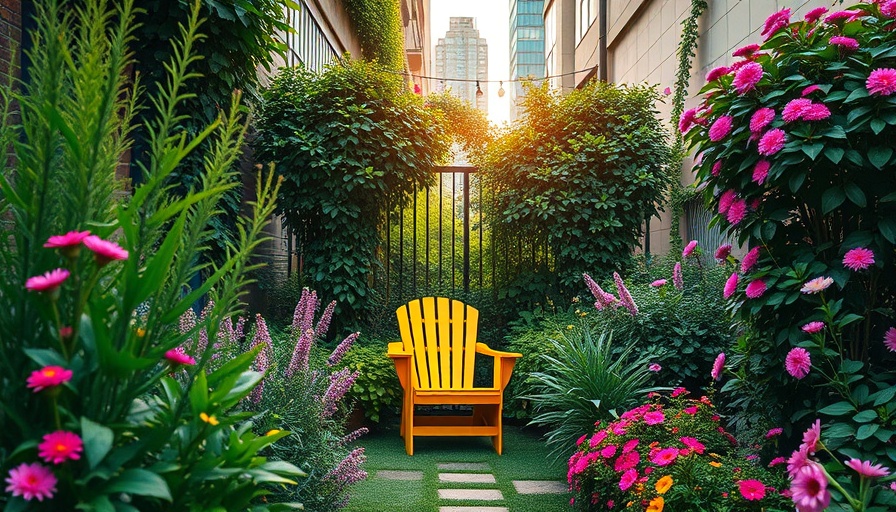
Transforming Urban Spaces: The Art of Gardening in Brooklyn
In the bustling landscape of Brooklyn, gardening emerges as a form of personal expression and a connection to nature. Melissa Goldstein, a passionate ceramist from MG by Hand, has beautifully demonstrated how to cultivate a vibrant garden amidst the challenges posed by urban living. Her journey in transforming her backyard from a pesticide-laden plot into a verdant oasis not only showcases her dedication but also highlights the transformative power of responsible gardening.
From Poisoned Soil to Lush Gardens: Melissa's Journey
When Goldstein first set foot in her Brooklyn backyard, she was met with a grim reality: the soil was contaminated from years of pesticide use by the previous owner. “We moved in and inherited a poisoned yard,” she recalls. Undeterred by the daunting task ahead, Goldstein embarked on a mission to revive her backyard, fueled by her childhood passion for nature walks. With hands-on techniques—such as planting nitrogen-fixing crimson clover and utilizing compost from New York City—she began to restore the soil health, laying the groundwork for a flourishing garden.
A Green Sanctuary: The Design Choices That Make a Difference
After successfully revitalizing the soil, Goldstein focused on structure. She emphasized the importance of choice in plant types, opting for plants that not only thrive together but also create an aesthetically appealing environment. “I bought a ‘really beautiful boxwood’ and started propagating,” she explained, emphasizing that creating a lush garden is as much about the plants' synergy as it is about their individual qualities. Her efforts resulted in a garden that boasts sturdy boxwood shrubs mixed with colorful bachelor buttons and elegant daisies.
The Power of Living Fences: Enhancing Community Through Design
One of the most striking features of Goldstein’s garden is the living fence formed by European hornbeam plants. She replaced the standard chain-link barrier that once separated her yard from that of her neighbor with a knitted community fence, fostering a sense of connection. “The children loved running back and forth between the two yards,” she recalls with a smile. This clever design not only enhances the garden’s privacy but also serves as a bridge between families, illustrating how gardens can encourage relationships in urban settings.
The Emotional Impact of Gardening: More Than Just Plants
Gardening is not merely a hobby; it’s therapy, liberation, and a way to forge memories. For Goldstein, her backyard symbolizes resilience and creativity. “It’s a small patch in the grand scheme, but it’s my escape,” she shares. The psychological benefits of engaging with nature are undeniable, as studies have shown that tending to plants can elevate mood and reduce stress levels.
Future Trends in Urban Gardening: Lessons from Melissa
As cities continue to expand and landscapes become more concrete, Goldstein’s approach to gardening might offer valuable lessons for urban dwellers everywhere. Focusing on sustainable practices such as using local compost and eliminating harmful pesticides is becoming crucial in modern gardening. Goldstein’s successful transition from a neglected yard to a thriving community space paves the way for aspiring gardeners to embrace eco-friendly methods.
Your Turn: Inspiring Change in Your Backyard
Are you ready to transform your outdoor space? Goldstein’s journey serves as an inspiration for homeowners looking to make the most out of their urban patches. Whether you want to start small by planting a few flowers or embark on a full yard renovation, the options are limitless. By choosing sustainable options, you can create a personal retreat while also contributing positively to your environment.
Goldstein’s story reminds us that our connection to nature, however small, can impact our lives profoundly. Start your gardening journey today and witness the magic unfold right in your backyard!
 Add Row
Add Row  Add
Add 




Write A Comment